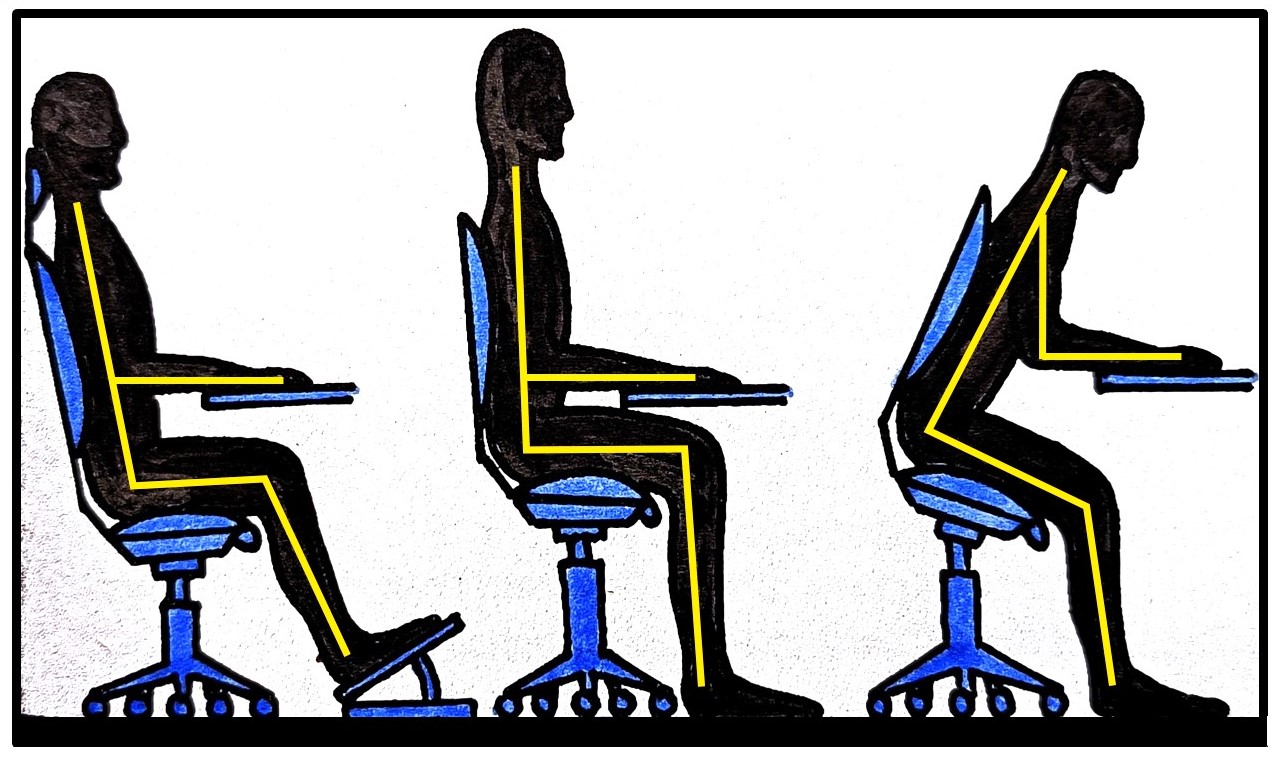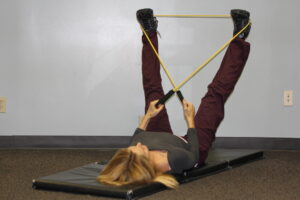Introduction
Hey there! Let’s chat about why Good Posture is like your silent health superhero. It’s not just about sitting or standing right; it’s the backbone (literally!) of your overall health. In today’s world, where slouching is the norm, our bodies aren’t thrilled about it. From annoying back pain to a meh mood, how we carry ourselves affects more than we realize. That’s where this guide jumps in! We’re digging into the art and science of standing tall and sitting straight, not just because Grandma said so, but because it seriously boosts your health. Stick around for posture improvement tips for back and neck pain – your body will thank you!
Understanding the Significance of Posture

The Big Picture: Posture and Overall Health
Let’s dive into why Good Posture is like the superhero of your well-being! Picture this: when you stand tall, everything inside you – from lungs to intestines – gets more space to do its thing. That means better breathing, digestion, and overall circulation. But wait, there’s more! Good posture is like a magic wand for your skeleton, reducing stress on muscles and joints. It’s like a domino effect where your body works and feels better, and yeah, it looks better too!
Link Between Posture and Spine Health
Now, let’s zoom in on the spine. This architectural marvel is designed to support and move you, but it needs good posture to do its job right. A healthy spine has natural curves that act as shock absorbers, distributing stress as you move. Slouching or spending too much time in awkward positions can flatten or exaggerate these curves, leading to discomfort and potential issues down the line. Think of your spine as the framework of your health house—keep it strong and straight, and everything else stands firmer and functions better.
Common Posture Problems

The Usual Suspects: Identifying Posture Problems
Before we dive into the posture improvement, lets identify the problems. We’ve all been there—hunched over laptops, craning necks at smartphones, or slumping on the couch. These all-too-common habits are prime culprits of poor posture. But what exactly goes wrong? For starters, there’s the “text neck,” where tilting your head to stare at screens puts strain on your neck and shoulders. Then there’s the “computer slouch,” a favorite among office workers, leading to rounded shoulders and a curved spine. And let’s not forget the “one-side lean,” often seen in those who carry bags on one shoulder or cradle phones with their neck. These habits gradually reshape your posture, setting the stage for discomfort and health issues.
How Poor Posture Contributes to Back and Neck Pain
When your posture starts to falter, your back and neck are the first to raise the alarm. Poor alignment puts abnormal pressure on your spine, muscles, and ligaments, leading to tension, stiffness, and pain. It’s like forcing your body into a shape it wasn’t meant to hold, causing wear and tear that could have been avoided. Over time, this can evolve into chronic issues, demanding more than just an occasional stretch to fix. It’s a clear signal that your body is struggling with the demands you’re placing on it, urging you to straighten up and address the root of the problem.
Posture Improvement Techniques
Building a Stronger Foundation: Techniques for Posture Improvement
Good posture isn’t just for show—it’s about creating a balanced, stress-free state for your body. Whether you’re standing, sitting, or moving, each position has the potential to support or strain your well-being. Let’s dive into some effective tips to improve your posture from slouchy to sturdy.
Incorporating Posture Exercises into Daily Routines
Consistency is key when it comes to posture improvement. Integrating simple exercises into your daily routine can make a world of difference. Start with stretching exercises that target your back, shoulders, and neck, releasing tension and promoting flexibility. Strengthening exercises, especially for your core and back muscles, provide the support your spine craves. Even something as straightforward as mindful standing—aligning your ears, shoulders, hips, and ankles in a straight line—can retrain your body to maintain better posture naturally.
Ergonomics and Posture at Work
Desk Job Doesn’t Have to Mean Desk Slouch
For many of us, the office is where posture goes to die. Hours spent at desks can turn into a battleground for your back and neck, but it doesn’t have to be this way. Ergonomics—the science of designing the workplace to fit the user—can be your ally in maintaining good posture.
Setting up an Ergonomic Workspace for Optimal Posture
An ergonomic workspace is tailored to support your body’s natural posture. Start with your chair: it should allow your feet to rest flat on the floor, with your knees at a 90-degree angle. Your monitor should be at eye level, preventing you from having to tilt your head up or down. The keyboard and mouse should be within easy reach, so you’re not straining your shoulders or arms. Even small adjustments, like using a footrest or positioning your screen to avoid glare, can significantly impact your comfort and posture.
The Role of Exercise in Posture Enhancement

Exercise corrects posture, which improves the balance of the body.
Strengthen Your Way to Better Posture
Exercise isn’t just about fitness—it’s a cornerstone of good posture. Regular physical activity strengthens the muscles that keep your body aligned, making it easier to maintain a proper posture without even thinking about it. Thus improving your posture!
Strengthening Core Muscles for Improved Posture
Your core muscles—encompassing your abdomen, lower back, and pelvis—are the main players in maintaining your posture. Exercises like planks, bridges, and abdominal crunches strengthen these areas, providing a solid base for your body. But don’t forget about the rest of your muscles; a balanced workout routine that includes all major muscle groups contributes to overall strength and stability. Activities such as swimming, walking, and cycling are great for building endurance and flexibility, further supporting your posture goals.
By integrating these strategies into your daily life, you’re not just working towards better posture; you’re building a foundation for improved health and well-being. Remember, small changes can lead to significant improvements, so start incorporating these tips into your routine and stand tall in the face of posture challenges.
Yoga and Pilates for Posture Correction
Stretch and Strengthen: Yoga and Pilates for a Straighter You
Yoga and Pilates are more than just trendy workouts; they are powerful tools for transforming your posture. These practices blend strength, flexibility, and mindfulness to realign your body and reinforce the core muscles that hold you up. But how exactly do they work their magic? Let’s dive in.
Yoga: The Path to Poise and Balance
Yoga is all about balance, flexibility, and strength. Through a variety of poses (asanas), it stretches tight muscles that contribute to poor posture while strengthening the muscles that support alignment. Here are three yoga poses particularly beneficial for posture:
- Mountain Pose (Tadasana): The foundation of all standing poses, Tadasana teaches you to stand with strength and grace, embodying perfect posture.
- Cobra Pose (Bhujangasana): This backbend strengthens the spine and opens up the chest and shoulders, counteracting the slouch.
- Warrior Pose (Virabhadrasana): Strengthens your shoulders, arms, legs, ankles, and back, while improving focus and balance.
Pilates: Core and More for Posture Perfection
Pilates focuses intensely on the core—comprising your abdominals, lower back, hips, and buttocks. A strong core is essential for good posture, as it supports the entire body, ensuring alignment and balance. Pilates exercises that can help improve posture include:
- The Hundred: A breathing exercise that strengthens the abdominal muscles and increases lung capacity, promoting a tall, strong spine.
- Roll-Up: Stretches the spine and strengthens the abdominals, enhancing the natural curve of the back.
- Swan Prep: Strengthens the back muscles and improves the flexibility of the spine, helping to maintain an upright posture.
Integrating Yoga and Pilates into Your Routine
Incorporating yoga and Pilates into your weekly routine can significantly affect your posture improvement. Even a few minutes a day can help stretch and strengthen your body, leading to noticeable improvements in how you stand and sit. Here’s a simple schedule to get started:
| Day | Activity | Duration |
|---|---|---|
| Monday | Yoga | 20 mins |
| Wednesday | Pilates | 20 mins |
| Friday | Yoga or Pilates | 20 mins |
Remember, consistency is key. It’s not about doing a marathon session once a week but rather about regular, mindful practice. Listen to your body, and don’t push into pain. With time, you’ll find your posture naturally improving, along with your overall health and well-being.
Posture-friendly Habits for Daily Life
Everyday Actions for Lifelong Alignment
Good posture isn’t just for the yoga mat or Pilates studio; it’s for life. Every day presents opportunities to practice and improve your posture, from how you walk to how you sleep. Let’s look at some simple yet effective habits you can start today.
Active Standing and Walking
Believe it or not, there’s a right and wrong way to stand and walk. Keep your head up, shoulders back, and stomach in. Imagine a string pulling you up from the top of your head. When walking, let your heel touch the ground first, then roll through to your toe. These small adjustments can make a big difference in your posture and how your body feels at the end of the day.
Mindful Sitting
Many of us spend hours sitting, whether for work, commuting, or relaxing. It’s crucial to sit properly: feet flat on the floor, lower back supported, and shoulders relaxed but not slouched. Every hour, take a moment to check and adjust your posture, or better yet, stand up and stretch.
Posture Cues and Reminders
Setting reminders on your phone or using sticky notes can prompt you to straighten up throughout the day. You could also use posture apps or gadgets designed to alert you when you’re slouching. Make posture checks a habit, like brushing your teeth or checking your email.
Creating a Posture-friendly Environment
Your environment plays a significant role in maintaining good posture. Here are a few adjustments you can make:
- Ergonomic Chair: Invest in a chair that supports your spine’s natural curves.
- Monitor Height: Ensure your screen is at eye level to avoid tilting your head down.
- Footrest: If your feet don’t comfortably reach the floor, use a footrest to reduce strain on your back.
Incorporating these habits into your daily life can significantly impact your posture, health, and overall well-being. It’s about making small changes that add up to big benefits.
Posture and Mental Health Connection
Standing Tall: The Psychological Benefits of Good Posture
The link between posture and mental health is powerful and often overlooked. Posture improvement can enhance your mood, confidence, and even your outlook on life. Let’s explore how standing and sitting tall can be transformative, not just physically but mentally.
Boosting Confidence and Mood
Research shows that adopting a power stance—standing in a posture of confidence, even when we don’t feel confident—can boost feelings of self-assurance and decrease stress. This is not just about “faking it till you make it”; it’s about the physiological impact of posture on hormone levels, particularly cortisol and testosterone, influencing how we feel and interact with the world.
The Feedback Loop Between Mind and Body
Our minds and bodies are in constant communication. Slouching or slumping can send signals to your brain that you’re defeated or disengaged, affecting your mood and energy levels. Conversely, adjusting your posture to be more upright can send positive signals back to your brain, improving your mood and increasing your energy. It’s a feedback loop where your posture can either be a tool for upliftment or a barrier to your well-being.
Integrating Posture into Mental Health Practices
Incorporating posture awareness into your daily routine can enhance your mental health practices. Here are a few tips:
- Mindfulness and Meditation: While meditating, focus on maintaining a straight but relaxed posture. This not only helps with concentration but also enhances the physical benefits of meditation.
- Breathing Exercises: Good posture improves lung capacity and breathing. Practice deep breathing in a seated or standing position, focusing on keeping your spine long and straight.
- Positive Visualization: While practicing good posture, visualize yourself succeeding or achieving your goals. The physical stance of confidence can reinforce your mental resolve and ambition.
Good posture is more than just standing up straight; it’s a cornerstone of physical and mental health. By embracing the practices of yoga and Pilates, incorporating posture-friendly habits into your daily life, and understanding the deep connection between posture and mental well-being, you’re not just improving your stance—you’re elevating your life. Stand tall, breathe deep, and embrace the strength within you.
Importance of Regular Posture Check-ins
Keeping Track: The Why and How of Posture Assessments
One of the must do thing for posture improvement is regular posture check-ins. Regular posture check-ins are crucial for identifying bad habits and making necessary adjustments before they lead to discomfort or more serious health issues. Think of these check-ins as preventive maintenance for your body, akin to servicing your car. Just as you wouldn’t wait for your car to break down before taking it to the shop, you shouldn’t wait for pain or discomfort before paying attention to your posture. Here’s how to make posture assessments a regular part of your health routine.
How to Self-Assess Your Posture
Self-assessing your posture doesn’t require special equipment or a healthcare professional—just a mirror and an awareness of what good posture looks like. Here’s a simple step-by-step guide:
Standing Side View:
- Stand side-on to a mirror.
- Check that your ears, shoulders, hips, knees, and ankles align in a straight line.
- Notice if your head juts forward or if your shoulders are rounded.
Standing Front View:
- Face the mirror directly.
- Your shoulders should be level, with no tilting.
- Both sides of your body should mirror each other, with equal spacing between your arms and sides.
Sitting Posture:
- Sit in front of a mirror or ask someone to take a photo of you sitting.
- Your lower back should have a slight forward curve (lumbar lordosis).
- Shoulders back, and ears aligned over your shoulders.
Making Necessary Corrections
Once you’ve assessed your posture, it’s time to make corrections. This might involve:
- Adjusting your work environment for better ergonomics.
- Incorporating specific exercises or stretches to target areas of weakness or tightness.
- Reminding yourself regularly to check and correct your posture throughout the day.
The Role of Professional Posture Assessments
While self-assessments are valuable, consulting a professional can provide a more comprehensive evaluation. Professionals such as physiotherapists, chiropractors, or posture specialists can identify subtle imbalances and provide personalized advice. They might use tools like posture analysis software or gait analysis to offer insights you can’t get on your own.
Seeking Professional Guidance for Posture Improvement
When and Why to Consult a Professional
While many posture improvements can be self-managed, there are times when professional guidance is necessary. This is particularly true if you’re experiencing persistent pain, if your self-assessments reveal significant posture issues, or if you’re unsure about the correct exercises and strategies for improvement. Professionals can offer tailored advice, therapeutic exercises, and sometimes even manual therapy to address your specific needs.
Signs You Should Seek Professional Help
- Persistent pain or discomfort in your back, neck, or shoulders.
- Limited mobility or flexibility, making it difficult to maintain good posture.
- Noticeable postural misalignments that don’t improve with self-correction.
- Injury or medical conditions affecting your posture or spinal health.
Types of Professionals and What They Offer
| Professional | What They Offer |
|---|---|
| Physiotherapist | Custom exercise programs, manual therapy |
| Chiropractor | Spinal adjustments, posture correction |
| Osteopath | Whole-body approach, manual therapy, exercises |
| Posture Specialist | Specialized posture assessments, corrective exercises |
How to Get the Most Out of Professional Help
- Be proactive: Don’t wait for pain to become unbearable before seeking help.
- Follow through: Adhere to prescribed exercises and advice between appointments.
- Communicate openly: Share your lifestyle, habits, and any changes in your condition.
- Regular check-ins: Even after initial improvement, periodic assessments can prevent old habits from creeping back.
Conclusion: Embracing Posture for Health and Confidence
Posture improvement is a journey, not a one-time fix. It requires awareness, consistency, and sometimes a bit of professional guidance. But the rewards—reduced pain, increased confidence, and overall health—are well worth the effort. Remember, every step you take towards better posture is a step towards a healthier, happier you. Incorporate the tips and exercises shared in this guide into your daily routine, seek professional advice when necessary, and don’t underestimate the power of regular check-ins with yourself and your posture.
Encourage yourself to stand tall, not just because it looks good, but because your body and mind will thank you for it. Here’s to a straighter, stronger, and more confident you!








